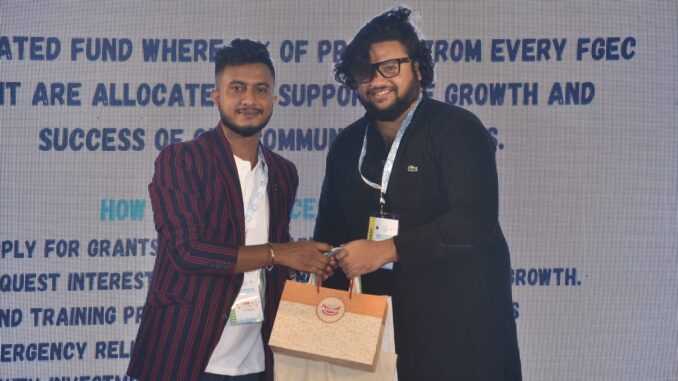By – Mr. Arsh Mogre, Economist – Institutional Equities, PL Capital – Prabhudas Lilladher basis the IIP CPI announcement.
India’s Consumer Price Index (CPI) rose marginally to 3.65% YoY in August 2024, up from 3.6% in July 2024, a slight acceleration but staying comfortably below the Reserve Bank of India’s (RBI) medium-term target of 4.0% for the second consecutive month. The August figure surprised to the upside compared to market expectations of 3.42%, driven primarily by persistent food price pressures. The combined Consumer Food Price Index (CFPI) rose to 5.7% from 5.4% in August. On a rural-urban split, rural inflation continued to outpace urban inflation, with the rural CPI at 4.2% YoY (up from 4.1%), driven by food prices, which rose to 5.6%. Urban inflation, meanwhile, rose marginally to 3.1% from 3.0% in July. Looking forward, while the headline CPI remains under control, the higher-than-expected print and persistent food inflation suggest that the RBI’s inflation management strategy could face challenges if food price volatility persists. However, with energy costs declining and core inflation not showing major increases, there is room for cautious optimism. Given these factors and the evolving growth-inflation scenario, it is projected that the RBI will not begin its rate easing cycle before Q3 FY25, despite an increased likelihood of a Fed rate cut in September 2024.
Key Insights – CPI:
Inflationary Pressures Ease, but Risks Remain: India’s retail inflation in August 2024 increased to 3.65%, from 3.54% in July, marking the second lowest inflation in five years. While inflation remains comfortably within the RBI’s tolerance band of 2-6%, it still falls short of the central bank’s “durable 4%” target. This suggests that while inflationary pressures have softened from the highs seen last year, risks remain elevated in the near term.
Base Effect Fades, Inflation Expected to Rebound: While inflation has softened significantly over the past year, the favorable statistical base effect that has helped moderate headline inflation is gradually wearing off. As a result, inflation is expected to climb back in the coming months, but it is likely to be restrained within a range of 4.5-5.0% in H2 FY25.
Food Inflation Pressures: Food inflation, which constitutes around 50% of the CPI basket, accelerated to 5.66% in August from 5.42% in July. Vegetables recorded a sharp rise, with inflation surging to 10.71% from 6.83% in the previous month. On the flip side, tomato prices saw a steep deflation of -47.91% YoY, but this is largely seen as a seasonal anomaly that may not provide long-term relief.
Monsoon Provides Relief: However, strong monsoon conditions provide optimism for food price moderation. India received 50.9 millimetres of rainfall (14.1% above the LPA) in the week ending 11 September 2024, with a cumulative seasonal rainfall of 8.3% above the LPA by 11 September. While some subdivisions experienced deficient rainfall, the emergence of La Niña conditions in late August bodes well for both the southwest and upcoming northwest monsoon seasons, supporting strong kharif and rabi sowing. This should help temper food inflation in the near future.
The somewhat restrained increase in Kharif MSPs will contribute a net deflationary impact of 10 basis points over the coming months. Additionally, the reduction in custom duties on gold from the FY25 Union Budget will provide a further 5-10 bps deflationary impact. However, given rising international gold prices and the depreciating rupee, the net impact is expected to be minimal.
Rural Inflation Outpaces Urban: Rural inflation rose to 4.16% in August, outpacing urban inflation, which moderated to 3.14%. The divergence is largely driven by food price inflation in rural areas, which remains more susceptible to agricultural supply shocks. The monsoon’s mixed impact could cause further fluctuations in rural food prices, though the overall strong rainfall should provide some relief in the medium term.
Core Inflation Steady, but Global Uncertainties Could Push It Up: Core inflation rose marginally to 3.65% in August-24 from 3.60% in July-24, reflecting a stable demand environment in discretionary sectors. With steady domestic demand and the diminishing base effect, it is expected to gradually rise to 4.0% in the coming months. While global commodity prices (crude oil, metals) have softened recently, uncertainties in the Middle East could drive renewed cost escalations, particularly in industrial inputs and energy, putting upward pressure on core inflation.
Inflationary Trajectory: A Balancing Act: It is reasonable to conclude that as the impact of favourable statistical base effect wears off, headline inflation would start climbing back again. While that’s quite likely, we believe the pull back in inflation will be restrained, with headline inflation remaining in the range of 4.5-5.0% in H2 FY25. Ongoing disruptions to maritime trade routes in the Middle East are expected to push up transportation and fuel costs, which could impact core inflation with a lagged effect. Additionally, pre-election fuel price cuts may provide further relief, supporting a glide towards lower inflation in H2 FY25.



